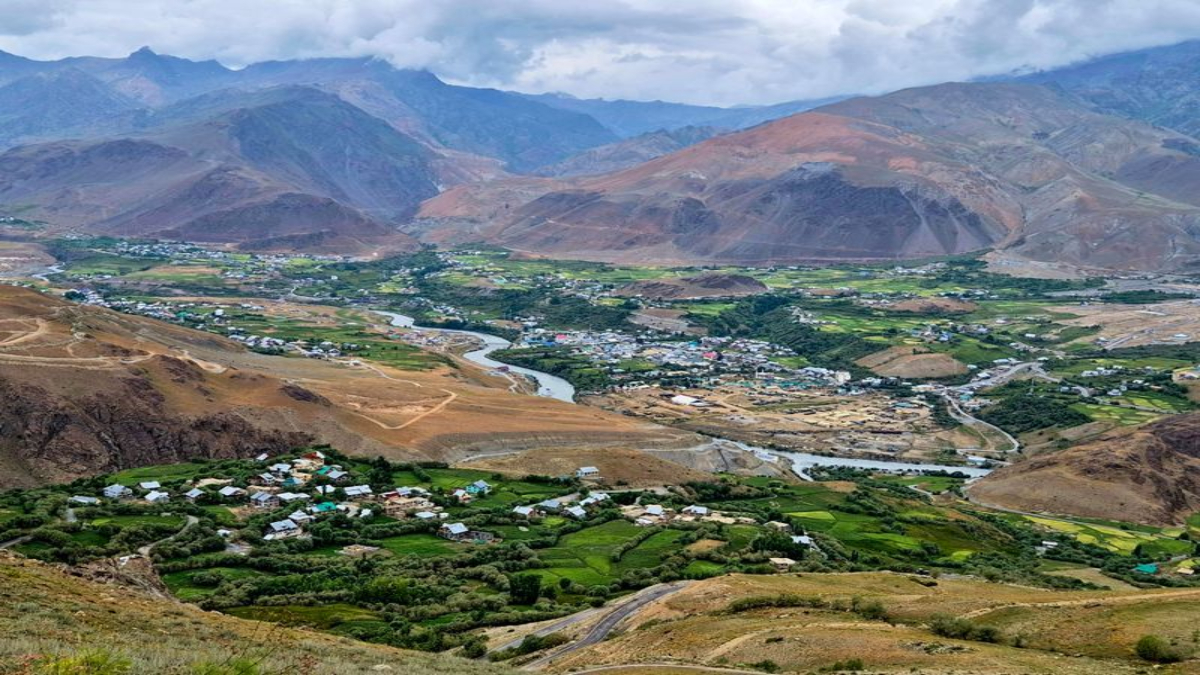Now Reading: Ladakh’s Geothermal Havens: Unlocking the Secrets of Life on Earth and Mars
-
01
Ladakh’s Geothermal Havens: Unlocking the Secrets of Life on Earth and Mars
Ladakh’s Geothermal Havens: Unlocking the Secrets of Life on Earth and Mars

Ladakh’s high-altitude hot springs are emerging as a pivotal site for scientific inquiry, offering unprecedented insights into the origins of life on Earth and potentially on Mars. Recent groundbreaking research by Indian scientists suggests that these unique geothermal environments could hold critical clues to how life-forming molecules first emerged and endured in extreme conditions, akin to those found on early Earth and potentially present on the Red Planet.
Traditionally, theories surrounding the origin of life on Earth have largely focused on silica-based environments. However, a team of researchers from the Birbal Sahni Institute of Palaeosciences (BSIP), an autonomous institute under India’s Department of Science and Technology, has challenged this long-held view. Their findings, particularly from the Puga Valley hot springs, highlight the underexplored, yet significant, role of carbonate minerals, specifically calcium, in supporting prebiotic chemistry.
The Puga hot springs, located at an elevation of approximately 14,500 feet in the Trans-Himalaya, are characterized by intense geothermal activity. The BSIP team, led by Dr. Amritpal Singh Chaddha, along with Dr. Sunil Kumar Shukla, Dr. Anupam Sharma, Prof. M.G. Thakkar, and Dr. Kamlesh Kumar, hypothesized that this extreme environment could serve as a natural “prebiotic reactor” and preservation site.
Utilizing a battery of advanced analytical techniques, including microscopy, Raman spectroscopy, Gas Chromatography-Mass Spectrometry (GC-MS-MS), X-ray Diffraction (XRD), Infrared spectroscopy (IR), and stable isotope geochemistry, the scientists made a remarkable discovery. They found preserved amino acid derivatives, fatty acids, sulfur compounds, and formamide – all fundamental building blocks of life – encapsulated within natural calcite crystals (a form of calcium carbonate) found in the travertine deposits of the Puga hot springs.
Dr. Chaddha emphasized that the travertine from Puga acted as an effective trap, stabilizing these organic precursors in an environment exposed to high UV radiation, conditions believed to have prevailed on early Earth and likely existing on early Mars. This empirical evidence strongly suggests that calcium carbonate can serve as a natural template for the chemistry that sparks life.
The significance of this discovery extends far beyond understanding Earth’s past. The Puga hot springs provide a real-world analog for the hydrothermal systems that may have once existed on Mars. The high-altitude, cold desertic conditions of Ladakh, coupled with high UV exposure and the presence of geothermal activity, closely mimic the extreme parameters believed to have characterized early Martian landscapes.
The implications for astrobiology and planetary exploration are profound. These findings offer a plausible model for how life-sparking chemistry could have occurred in harsh, extraterrestrial environments, providing valuable guidance for future space missions, including those by ISRO, in their search for biosignatures on Mars and other celestial bodies. By understanding how biomolecules are preserved in such natural settings, scientists can refine their strategies for identifying potential past or present life beyond Earth.
Furthermore, the research also deepens our understanding of natural biomolecule preservation mechanisms, which could have broader applications in fields like synthetic biology and materials science. The ongoing studies in Ladakh’s hot springs are not just rewriting our understanding of life’s beginnings, but also illuminating the potential for life to exist in the most unexpected corners of the universe.









